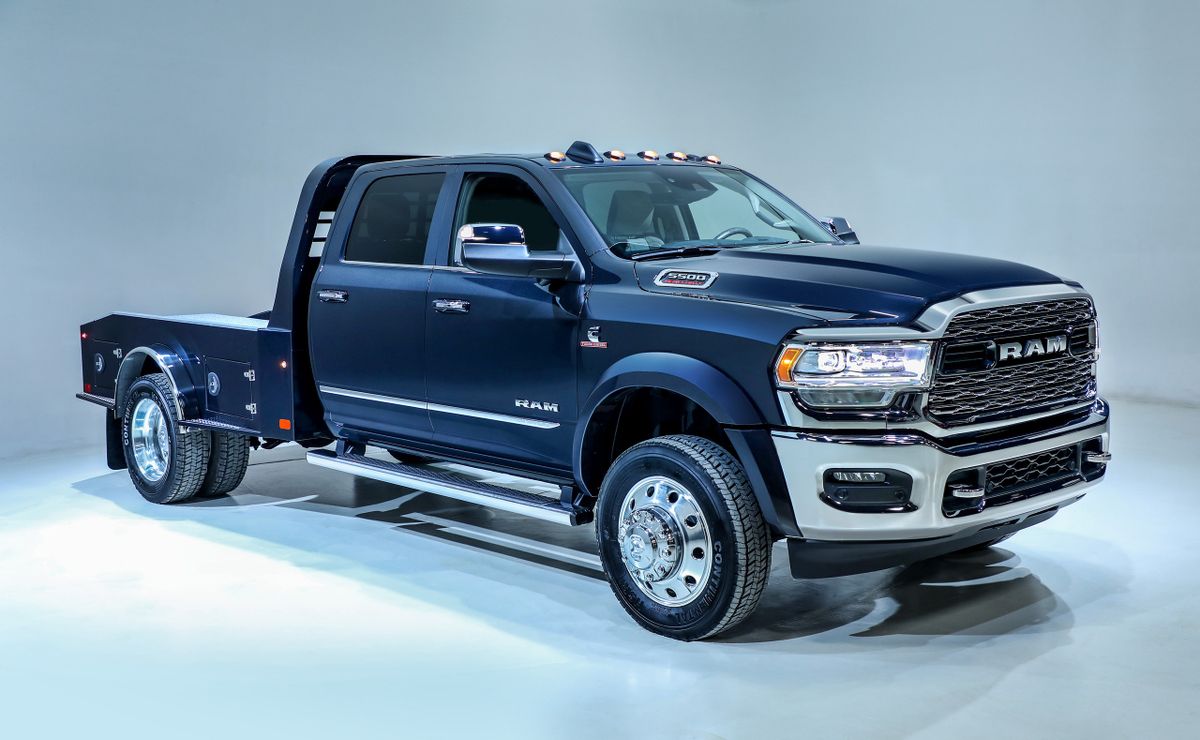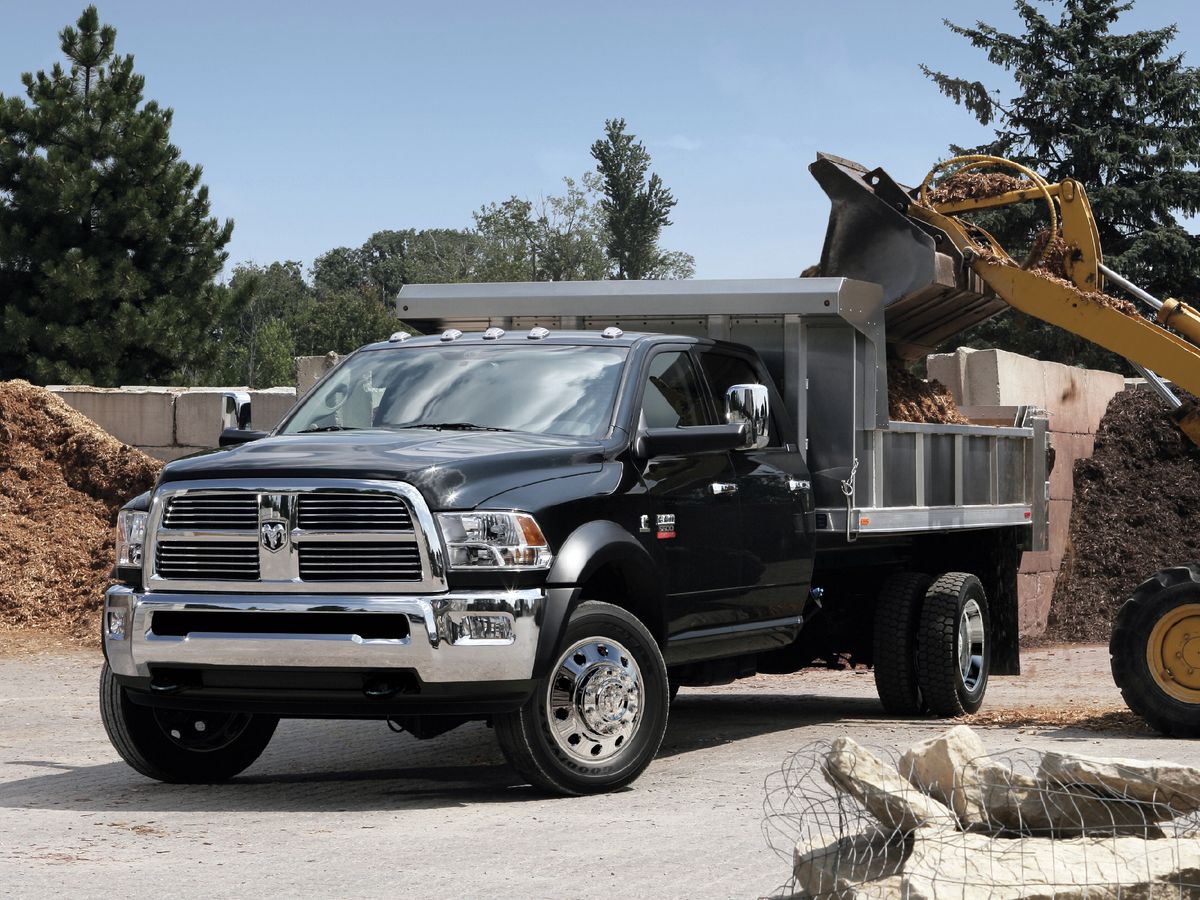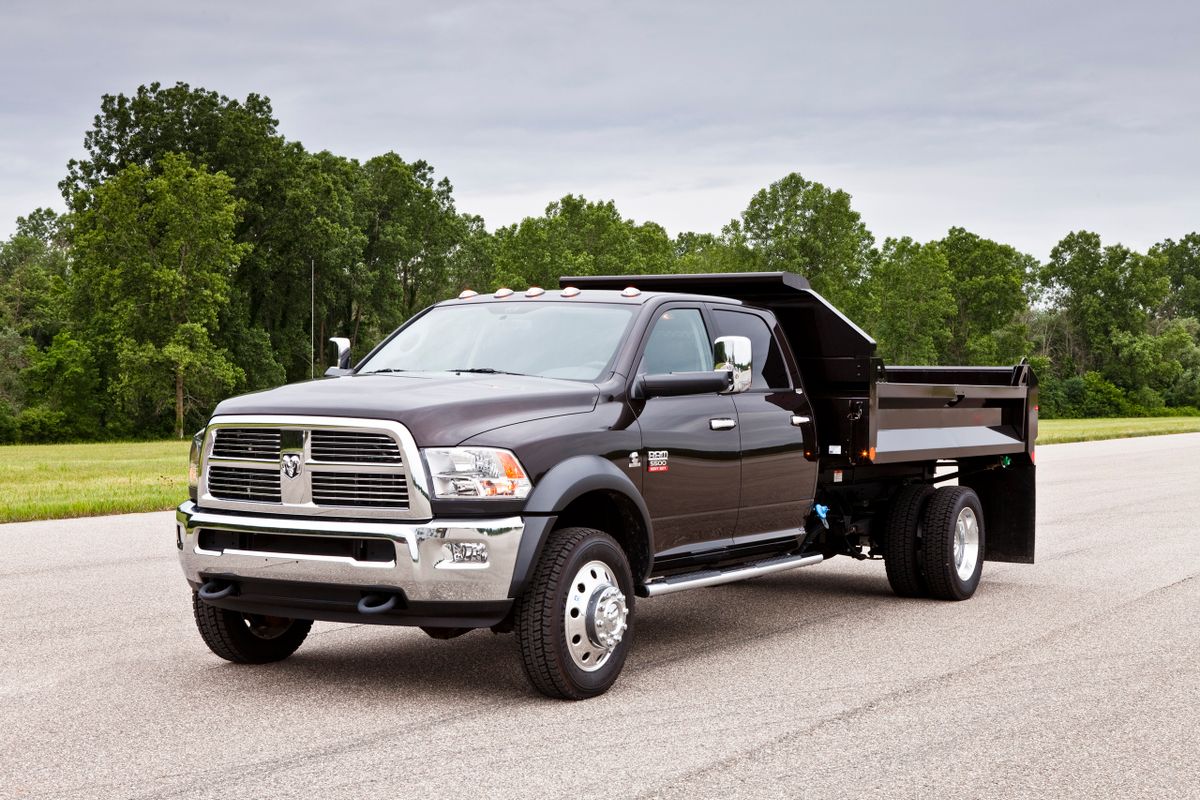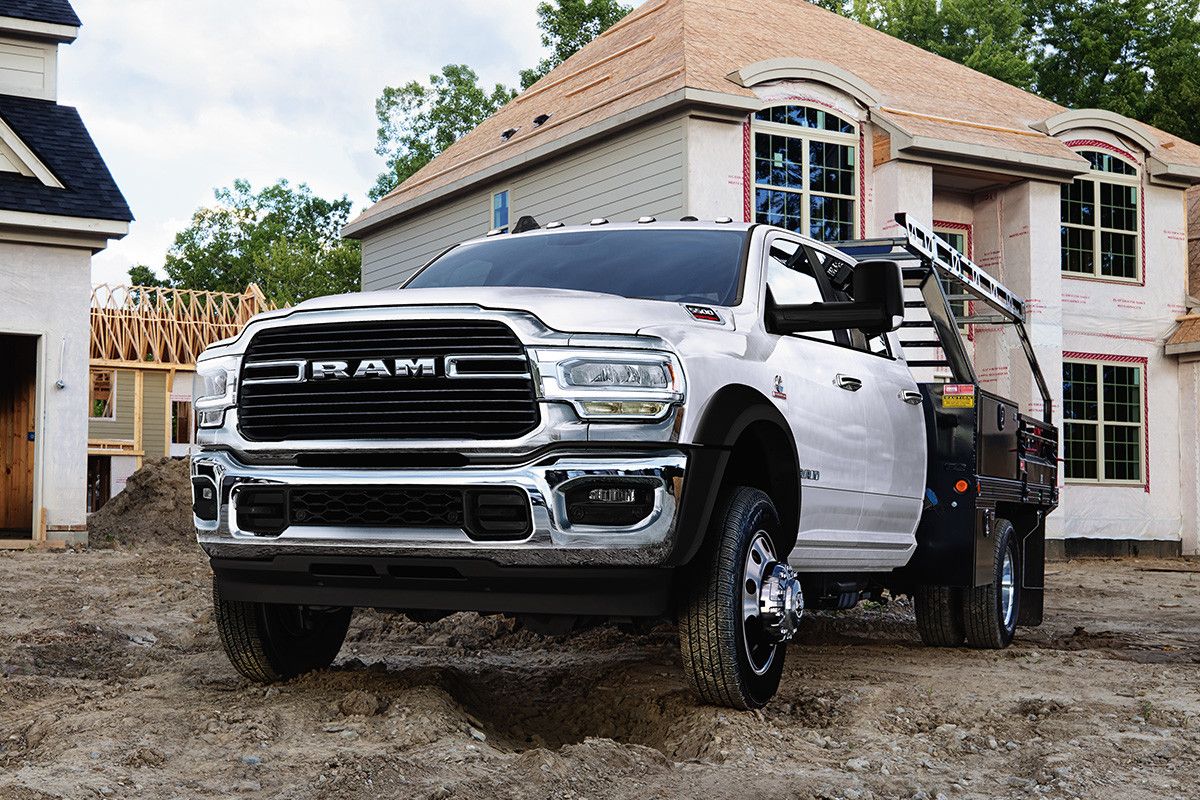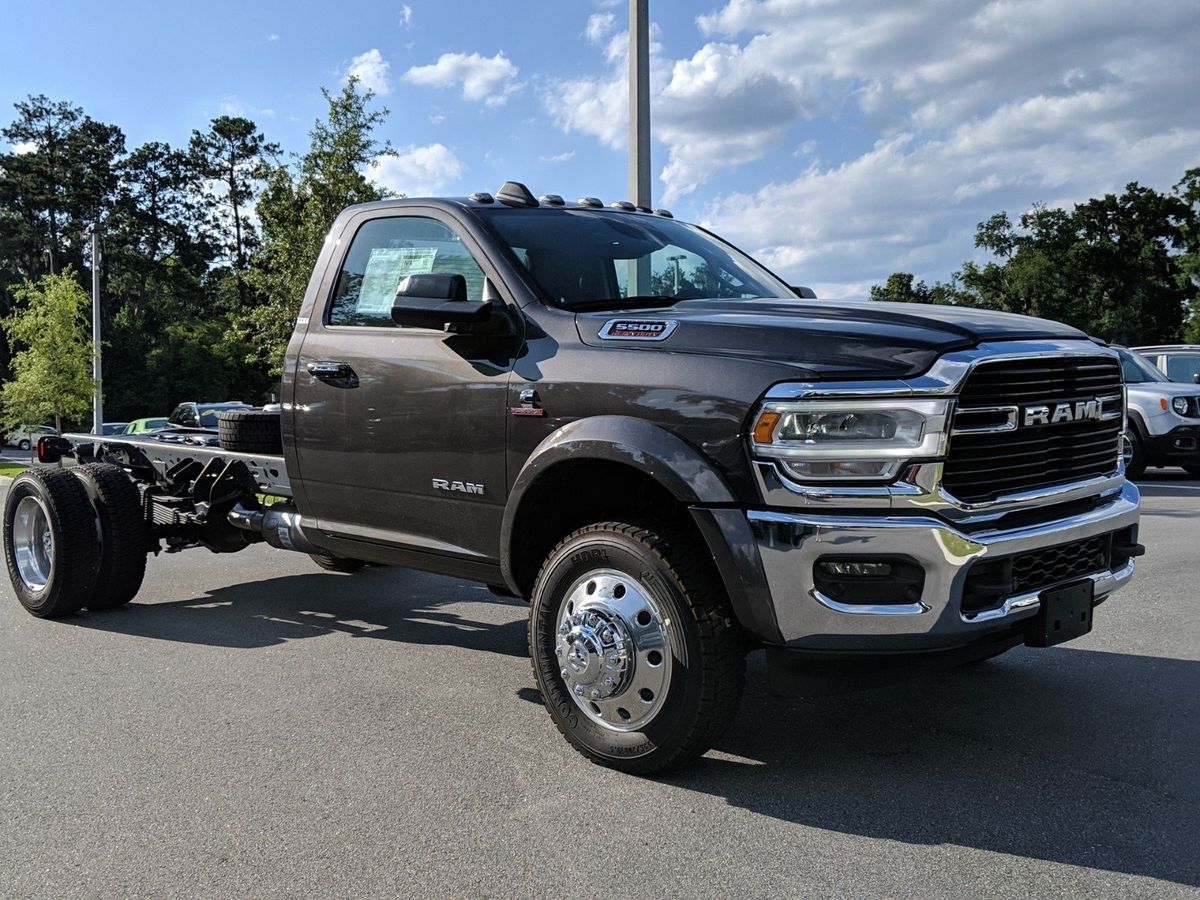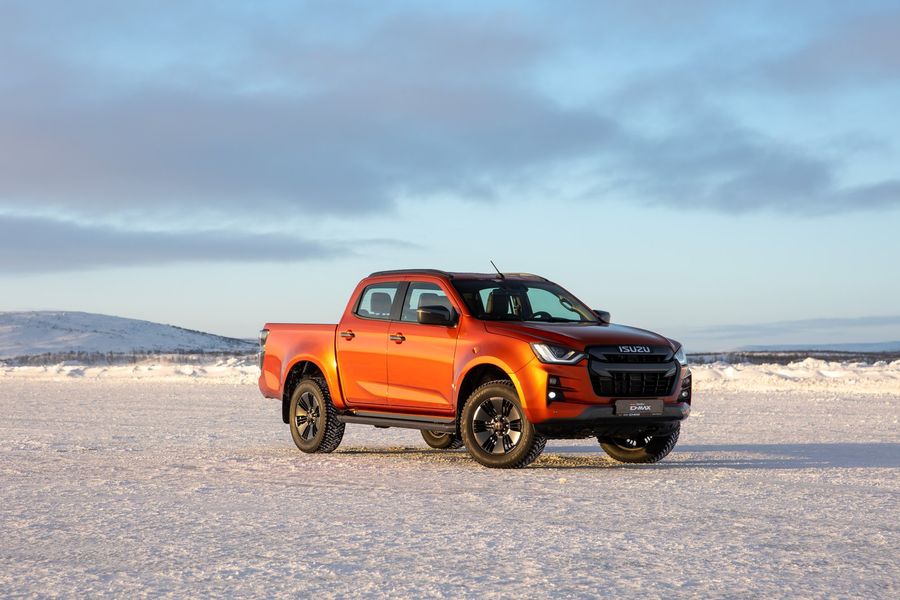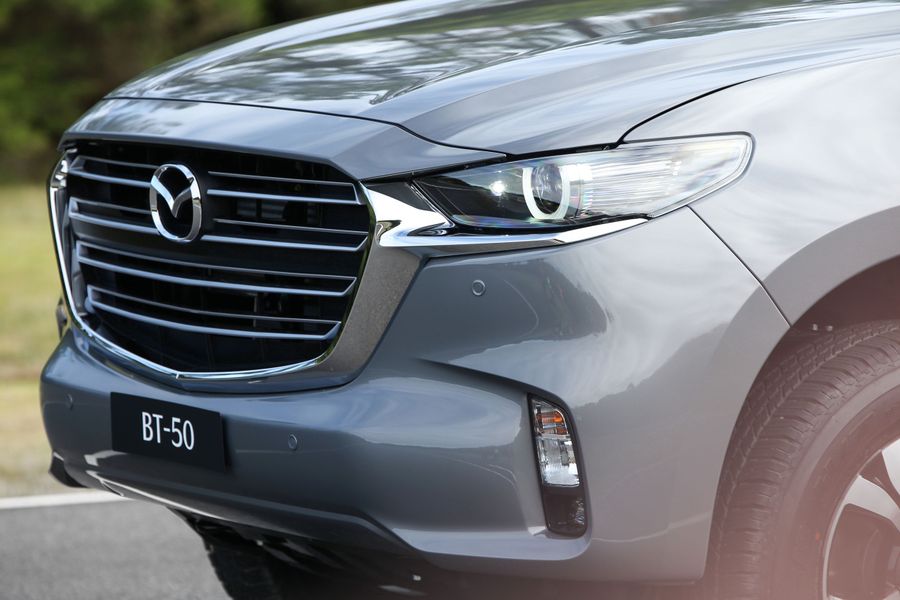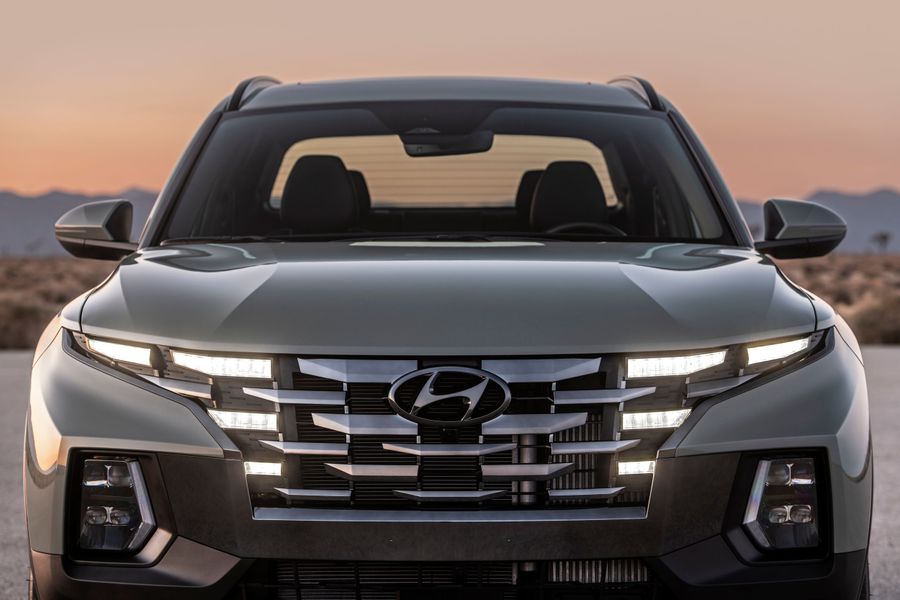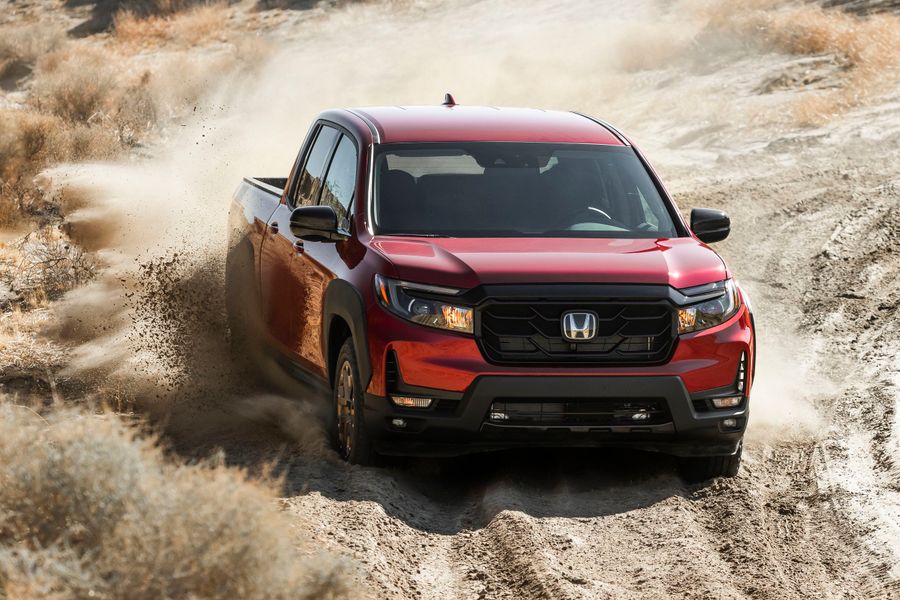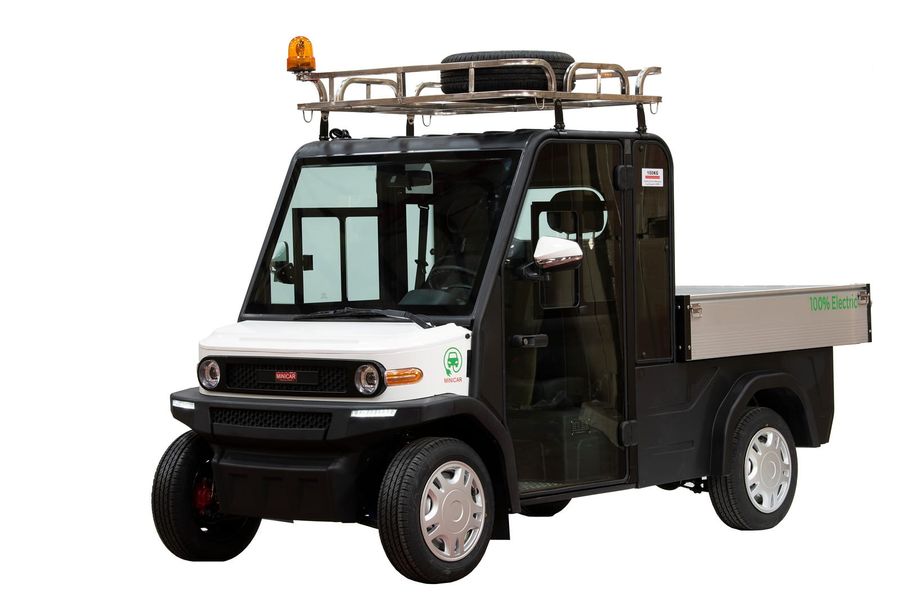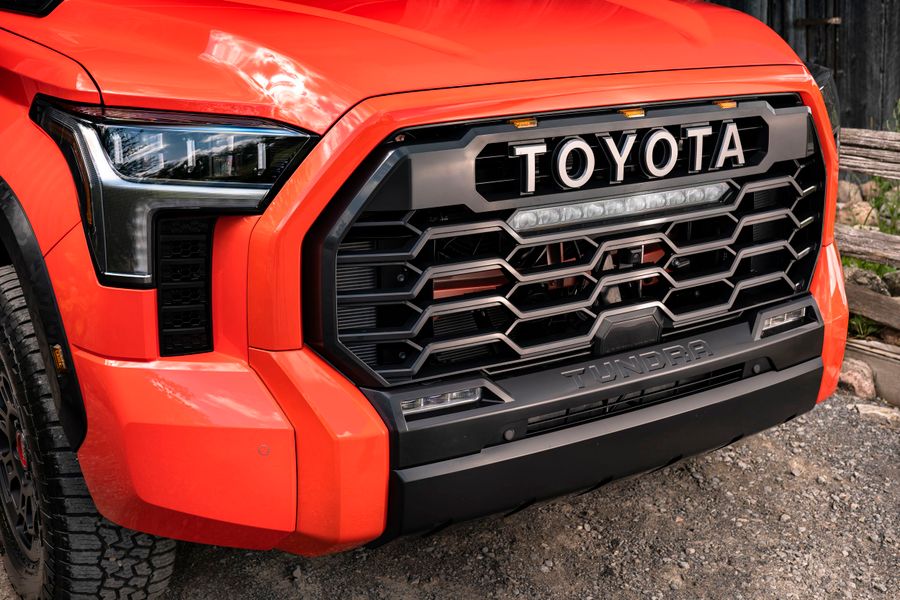
Chassis Cab. For heavy work
The RAM Chassis Cab is a RAM pickup for work with increased load and towing capacities. The designation ‘Chassis Cab’ indicates that this car is a real constructor, which comprises only two irreplaceable basic elements: the chassis and the cab. And on this platform, you can install any equipment, starting from an ambulance van to a construction crane.
The work-related modifications of the RAM Chassis Cab were developed for the classic 3500 model and RAM 4500 and 5500 models, specially created for this configuration. The power parameters of these RAMs were brought to their maximum power indicators, so it is fair to consider them full-fledged trucks.
The first generation
It was produced from 2008 to 2019. In 2008, Chrysler announced the release of new modifications of heavy models of Dodge RAM pickups with cargo indexes 4500 (gross weight – 7,500 kg) and 5500 (gross weight – 8,800 kg), with a new Chassis Cab body. The same type of bodywork became available for the heaviest model, the RAM 3500. RAM pickups were convenient for work, however, the power of even the strongest version of the 3500 was not enough for really serious business, such as digging a tunnel across the Mexican-American border or transporting a M1 Abrams tank for personal needs (just kidding). This is how the Chassis-Cab modification appeared.
The Chassis Cab models looked like RAM pickups, but their design and technical parameters were very different from the passenger versions. The trucks were built on a specially designed steel cargo frame. They could be equipped with only one 6.7 liter Cummins diesel engine generating 305 hp, which has more than half a million kilometers of the mileage life and which absorbed diesel fuel from the largest 237-liter tank in the class. By the way, the tank had an additional tap, allowing the use of diesel fuel for onboard generators.
The RAM Chassis Cab pickup was equipped with two enforced transmissions commonly used in trucks: a 6-speed automatic and a manual transmission. Plus, the trucks were equipped with an additional power take-off (PTO).
The front suspension of the Chassis Cab was reconfigured to handle high loads. Its axle became 12.7 cm longer for cornering at speed while carrying a tower crane and without the risk of rollover. Both the front and rear axles were solid beams with a 5-link front suspension with coil springs at the front and 2-stage leaf springs at the rear. The steel frame was 38% stronger than that of its main competitor, the Ford F-450/F-550, and could handle the boarding of Elon Musk’s launch vehicle from Mars. All components of the Chassis Cab’s chassis were placed below the surface of the frame so as not to interfere with the installation of any superstructures and equipment. This layout has been preserved to this day and has proven its advantages.
All components of the Chassis Cab’s chassis were placed below the surface of the frame so as not to interfere with the installation of any superstructures and equipment.
The electric system was about the same as that of any Dodge RAM, but there were also three 30-225 A wires under the hood, running through the dashboard to activate the switches, and along the frame to the rear. The trucks were equipped with large 7×10 towing mirrors. Visibility was further improved by low door sills and sun shades that could completely cover the windshield, thus allowing hiding the actual process of loading/unloading.
The Ram Chassis Cabs 4500 and 5500 were available in conventional and four-door cabs, in ST, SLT and Laramie trim levels, with rear-wheel drive and all-wheel drive. The list of standard options also included cruise control, manual 4×4 drive, six-disc CD player, and a navigation system.
Further evolution of the Chassis Cab was aimed at improving the load and towing capacities. In 2011, the RAM received an improved full-size cockpit, and a diesel engine could provide a towing capacity of more than 10 tons. With a manual transmission, the Cummins engine could generate up to 350 hp. In 2014, the pickups acquired even more powerful Cummins and HEMI Chrysler 6.4-liter engines. With them, the 5500 could easily tow a trailer weighing more than 13 tons. From that moment, the interior of the RAM Chassis Cab became similar to the premium versions of the RAM 1500, 2500 and 3500, since being big and strong was no longer enough, the vehicle also needed to look beautiful.
The exterior could boast more powerful fenders and front bumper, which was required by the heavy-duty front axle of the 4500 and 5500 models. The trucks now had a low-positioned air damper of a modified shape with built-in reinforced towing hooks, which were capable to move even Alabama (just kidding).
The RAMs acquired a specific HVAC body kit, a group of switches to control everything in automatic mode: towing/transportation, ESC exhaust brake on/off, trailer brake controller, ABS system, wheel locks and so on. The standard engine was a 6.4-liter HEMI petrol eight-cylinder engine with 410 hp, capable of carrying more than 5 tons. In 2015, the RAM Chassis Cab got a new five-link front suspension with reinforced springs.
2019 restyling
The upgraded version of the 2019/2020 RAM Chassis Cab differed from the pre-styled version by an even higher level of comfort in the passenger compartment. The new aluminum bonnet has reduced the overall weight of the vehicle.
A 6.4-liter Hemi V8 engine with 410 hp, coupled with an 8-speed automatic transmission, comes as standard. The former, 6-speed transmission is available with a 370 hp engine. As for diesel engines, the standard is a 6.7-liter inline 6-cylinder Cummins turbo diesel, which produces 360 hp. The engine is paired with a 6-speed automatic transmission.
The 2019/2020 RAM Chassis Cab is offered in the following trim levels:
- Tradesman: Maximum functionality, standard level of comfort;
- SLT: Previous configuration + additional options;
- Laramie and Limited: Premium pickups.
Different trim levels provide both 3.5 and 7-inch instrument cluster combinations, a 12-inch touchscreen infotainment system, push-button start, and models with an 8-speed automatic transmission equipped with climate control.
Each modification of the upgraded 2020/2021 RAM Chassis Cab comprises adaptive cruise control, a forward collision warning function, an automatic emergency braking function, including trailer braking, parking sensors, a 270-degree view camera system and a special cargo view camera, designed to monitor the loading platform of a truck without leaving the cab.

